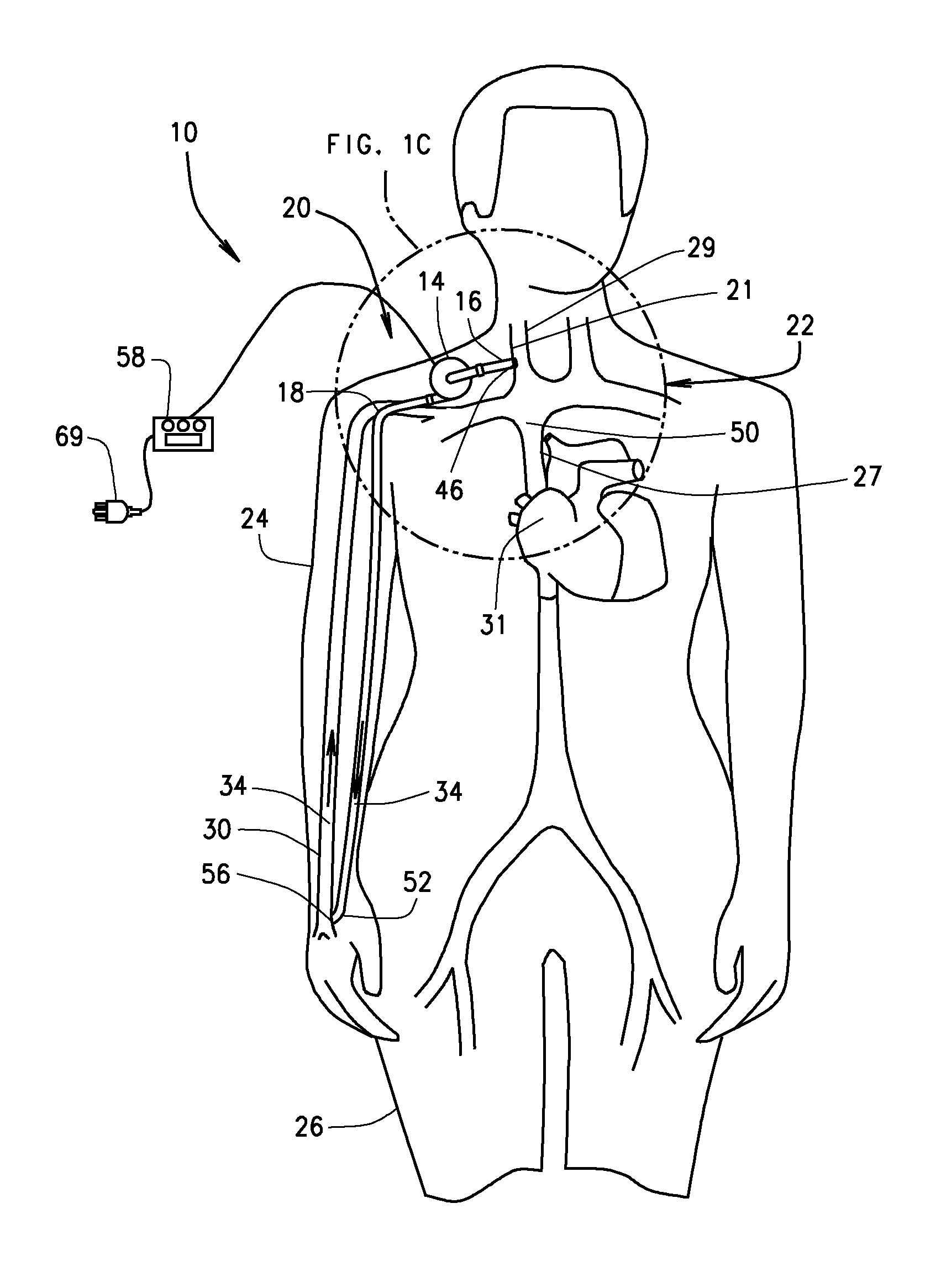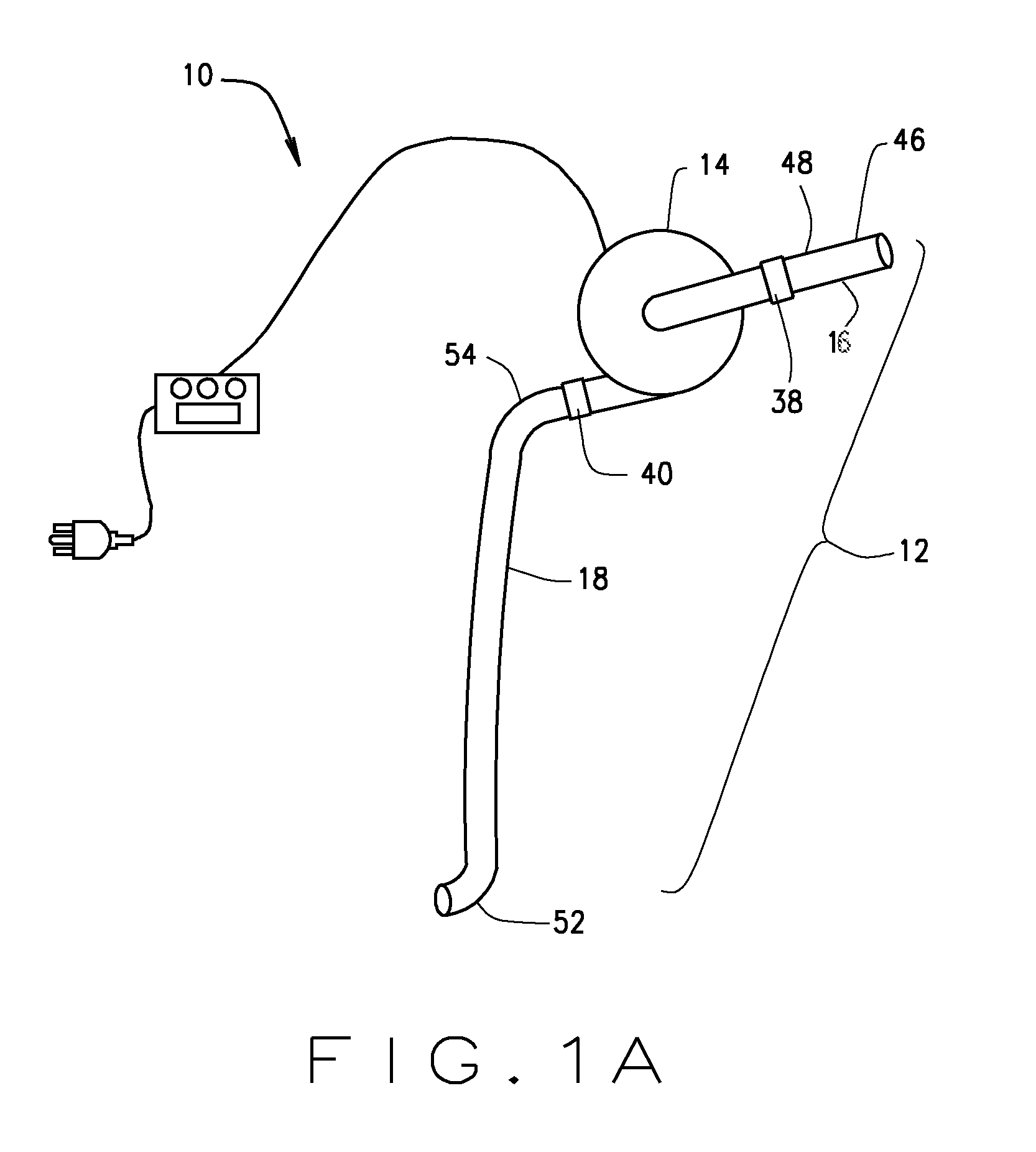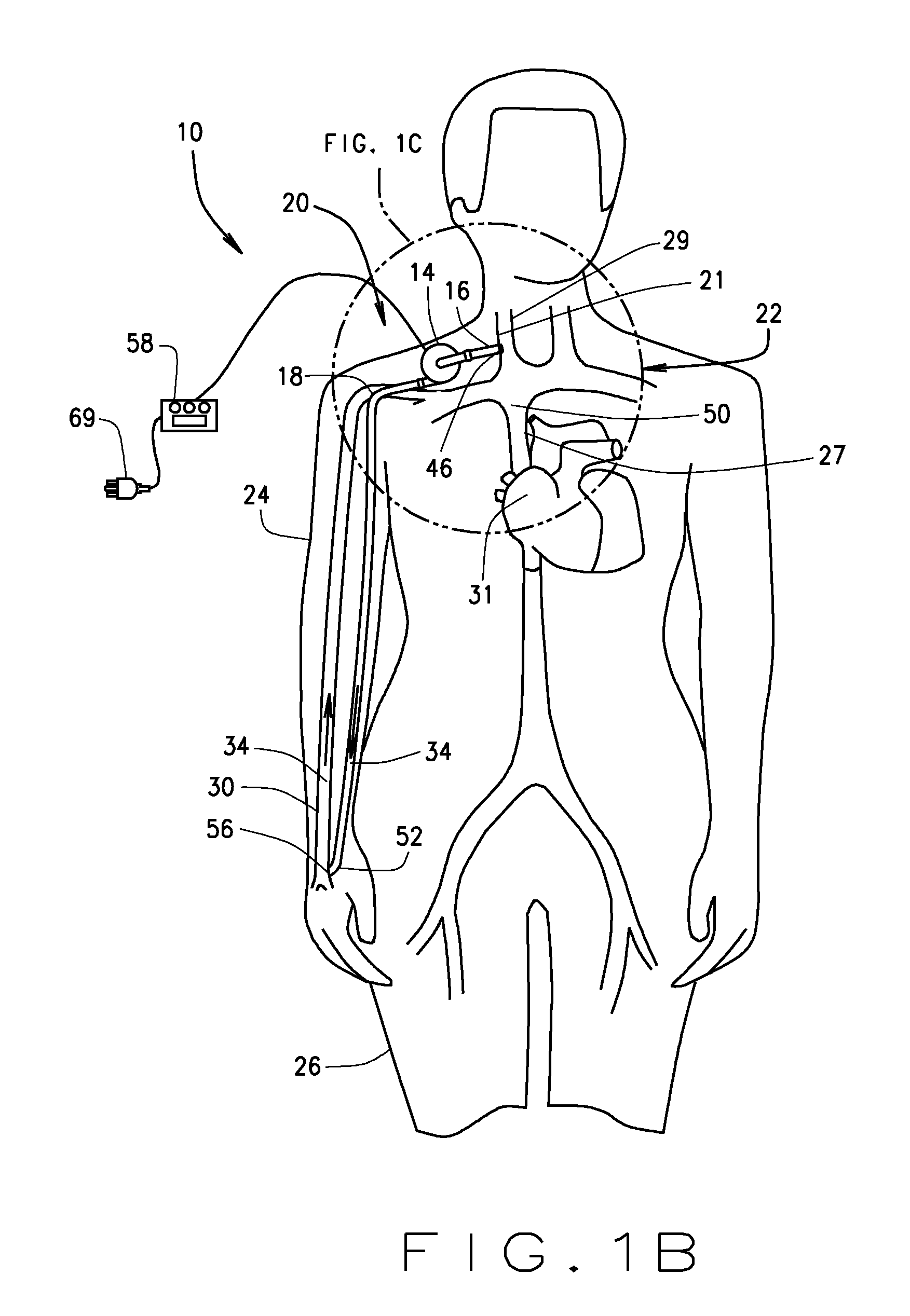System and method to increase the overall diameter of veins and arteries
a technology of overall diameter and lumen diameter, which is applied in the direction of catheters, other blood circulation devices, surgery, etc., can solve the problems of large burden on health care providers, payers, and patients, and achieve the effects of increasing overall and lumen diameter, increasing overall length, and increasing blood speed
- Summary
- Abstract
- Description
- Claims
- Application Information
AI Technical Summary
Benefits of technology
Problems solved by technology
Method used
Image
Examples
Embodiment Construction
[0059]The systems and components of the present application relate to a method for persistently increasing the overall diameter and the lumen diameter of veins and arteries. More specifically, in various embodiments, the present application relates to a method for pumping blood in a way (such as introducing blood or withdrawing blood from a selected peripheral vein or peripheral artery), such that the diameter of selected veins or arteries is persistently increased. The methods disclosed herein, may also increase the mean blood speed and / or the peak blood speed, as well as the mean wall shear stress and / or the peak wall shear stress in selected segments of veins or arteries for a period of time sufficient to persistently increase the overall diameter and the lumen diameter of selected segments of the veins or arteries. The methods may therefore be useful to create vascular access sites for hemodialysis, bypass grafts, or perform other vascular surgeries or procedures wherein a large...
PUM
 Login to View More
Login to View More Abstract
Description
Claims
Application Information
 Login to View More
Login to View More - R&D
- Intellectual Property
- Life Sciences
- Materials
- Tech Scout
- Unparalleled Data Quality
- Higher Quality Content
- 60% Fewer Hallucinations
Browse by: Latest US Patents, China's latest patents, Technical Efficacy Thesaurus, Application Domain, Technology Topic, Popular Technical Reports.
© 2025 PatSnap. All rights reserved.Legal|Privacy policy|Modern Slavery Act Transparency Statement|Sitemap|About US| Contact US: help@patsnap.com



